After detecting high levels of organic matter using remote sensors at the asteroid Ryugu, numerical models show that it’s possible that rubble pile asteroids are actually extinct comets. Plus, the Cosmic Optical Background, Enceladus’s tiger stripes, and this week in rocket history, we look back at STS-45.
Podcast
Show Notes
The universe is a bit brighter than we thought
- The universe’s background starlight is twice as bright as expected (Science News)
- “Anomalous Flux in the Cosmic Optical Background Detected with New Horizons Observations,” Tod R. Lauer et al., 2022 March 3, The Astrophysical Journal Letters
Neighbor bends galaxy all out of shape
- NOIRLab photo release
Ryugu may be extinct comet
- Nagoya City University press release
- “The Asteroid 162173 Ryugu: a Cometary Origin,” Hitoshi Miura, Eizo Nakamura, and Tak Kunihiro, 2022 January 31, The Astrophysical Journal Letters
How Enceladus got its stripes?
- AGU press release
- “Cooling Crusts Create Concomitant Cryovolcanic Cracks,” Maxwell L. Rudolph, Michael Manga, Matthew Walker, and Alyssa R. Rhoden, 2022 February 21
Boeing completes assembly of most of Artemis 2’s Core Stage
- NASA press release
This Week in Rocket History: STS-45
- STS-45 mission page (NASA)
- PDF: STS-45 press kit (NASA)
- NASA F4 Electronic Still Camera (Nikon)
- PDF: Talking to Space Shuttle Atlantis (HAM Waves)
Transcript
You’ve probably heard of the Cosmic Microwave Background, but today, we’re going to tell you about the Cosmic Optical Background.
Plus, our favorite asteroid to hate, Bennu, and its similarly shaped cousin Ryugu may be extinct comets.
And this week in rocket history, we’ve got another space shuttle mission, and this one carried one of the first digital cameras.
All of this now, right here on the Daily Space.
I am your host Dr. Pamela Gay.
I am your host Erik Madaus.
And we’re here to put science in your brain.
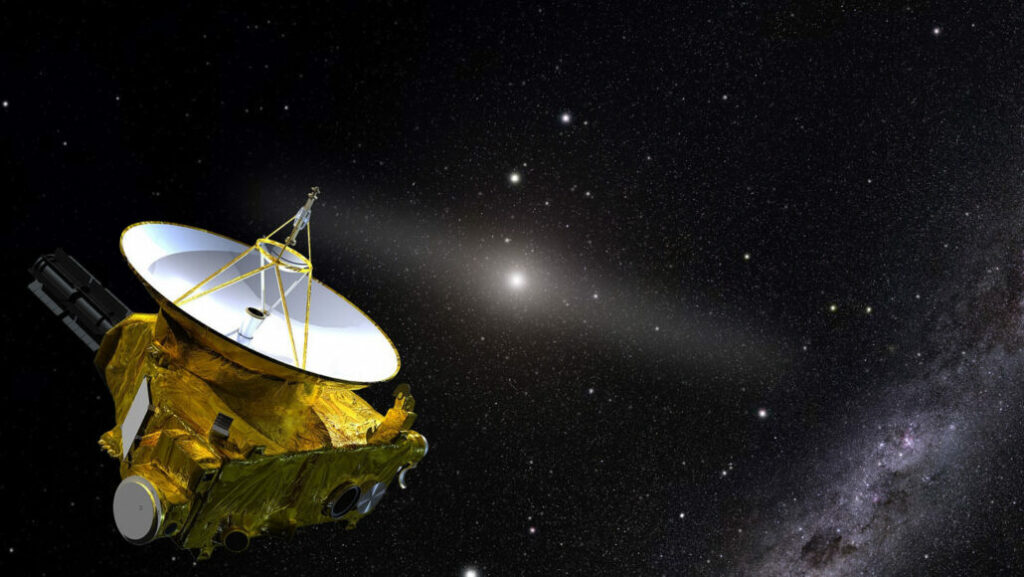
One of the strange mysteries of the universe is how bright is the darkness.
Yes, you heard that right: how bright is the darkness.
When we look at the spaces between the visible stars and galaxies, we don’t find perfect darkness. There is a light coming from every point in the sky, and that light comes from the background of stars, distant galaxies, clouds of gas, and things we can’t even imagine yet. This light is called the Cosmic Optical Background or COB.
Measuring the brightness of the darkness, or COB, is exceedingly difficult from inside our solar system. There is dust scattered throughout the solar system that reflects back sunlight, creating a glow that is brightest where the dust is densest along the disk of our solar system. We can try and correct for how bright we think the dust may be, but that isn’t the same as measuring it. To measure it, we need to get beyond the dust and directly measure the COB, which is what we were trying to do in the first place.
Science can sometimes take you on rather circular paths.
Anyway, the New Horizons spacecraft, which has traveled far out beyond Pluto, has highly sensitive cameras and has been trying to measure the darkness, and researchers have discovered that the darkness is twice as bright as we thought. According to team lead Tod Lauer: It turns out that the galaxies that we know about can account for about half of the level we see.
Or it could be that our attempts to measure the cosmic optical background are being thwarted by the dust in our galaxy reflecting light. This is another thing we’re still figuring out, and co-author on this study, Michael Zemcov, reminds us the Milky Way’s dust is a very subtle beast and our uncertainties likely get dominated by it at some point, just because it’s not very well understood.
So the darkness of space is twice as bright as we thought, and it could be there is just a whole lot of stuff out there — intergalactic stars, compact galaxies, things at the edge of the visible universe. Or our galaxy may just be differently dusty than we thought.
The darkness is confusing, but these results are pretty neat and they appear in a new paper in The Astrophysical Journal Letters. The New Horizons team plans to make more observations, looking at more parts of the sky, and as Zemcov puts it: There is something going on that we weren’t expecting, which is where the fun part of science kicks in.
Let’s face it, when we look at other galaxies we see a lot of dust, and it’s kind of easy to see how dust may be a problem here. Our galaxy and the universe beyond are chock full of weird and wonderful stuff we are just starting to understand. Thankfully, we have magnificent spacecraft like New Horizons, to help us out.
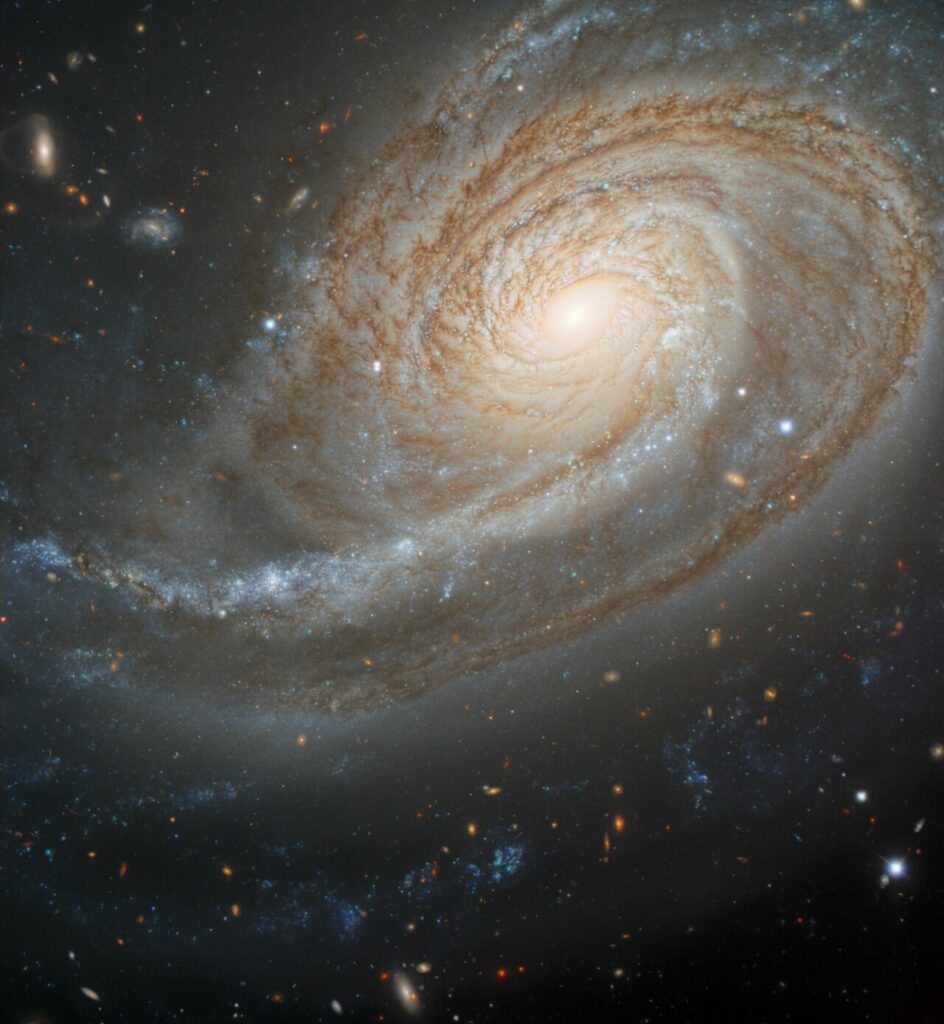
Back before the Hubble Space Telescope, before the Very Large Telescope, before ALMA, before digital cameras in general, folks did their best with smaller telescopes and chemically treated glass plates that acted like massive pieces of film. In these lower resolution images, weird mysteries were found and cataloged, and my personal favorite catalog is the Arp Atlas of peculiar galaxies. Astronomer Halton Arp used the Mount Wilson and Palomar observatories to image galaxies with unusual structures that ranged from splatter patterns of stars in colliding systems to things that are just a bit off.
One of these “just a bit off” galaxies is the egg-shaped spiral galaxy, Arp 79.
In the more than fifty years since this catalog was published, researchers have been working to understand just how each of the systems in this catalog gets their weird shapes. New images of Arp 79 taken with the Gemini North telescope in Hawai’i reveal that, other than being very lopsided, like a lobster with one massive arm and one tiny one, this galaxy is otherwise a normal, dust-filled, star-forming spiral of a galaxy.
The lopsided nature of this system is likely due to a smaller galaxy nearby pulling more on the one side and stretching out the one arm with its gravity. It doesn’t take a lot of mass to rearrange a spiral system, and one of the amazing things we’ve learned while looking at Arp’s Atlas is that almost every odd-shaped system out there has a companion galaxy that is making it look not quite right, and to understand the messy galaxy, we need to understand the companion that made it that way.
Put another way, no galaxy is weird in isolation; it takes a companion to help a galaxy get all bent out of shape. I’m going to try not to apply this lesson to anything beyond galaxies, but it does feel like there is a meme in here somewhere.
Anyway, the galaxies are made weird by companions, the darkness of space is bright, and apparently, one of our favorite asteroids might actually be the remains of a comet.
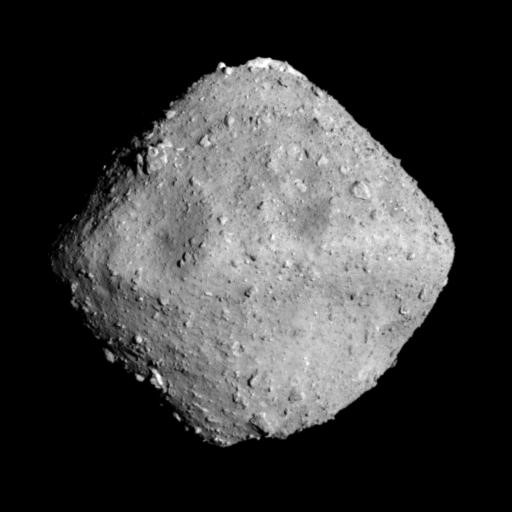
Rubble pile asteroids. Here at CosmoQuest, we have a love-hate relationship with these objects, mostly due to our work cataloging All The Rocks on Bennu. Our work helped the [OSIRIS-REx] site selection team decide just where to punch Bennu in the face and collect a sample. Okay, okay. It was supposed to be a gentle boop. But later analysis determined it was more of a punch. Anyway, that sample is still on its way back to Earth, but Bennu wasn’t the only asteroid sample collection mission happening back in 2020.
Over in Japan, scientists were excited to retrieve their sample of the asteroid Ryugu, taken by the Hayabusa2 mission. That sample has since been divided between Japan and the rest of the planetary science community for analysis, and a few preliminary results have already been published. However, there was a lot of data taken remotely prior to the sample collection that is also being analyzed, and one of the results shows that Ryugu has a “remarkably high organic matter content.”
Friendly reminder: ‘organic content’ only means stuff that contains a lot of carbon. Ryugu isn’t harboring alien life. At least, we doubt it is.
Back to that composition. Here’s where it gets interesting. Rubble pile asteroids like Ryugu and Bennu are basically spinning tops of loosely held together rocks. Sampling them was incredibly easy because they’re so loosely bound. And these characteristics led to the conclusion that they were created when larger asteroids collided, probably in our solar system’s more violent past. But if there is a whole lot of organic matter in those asteroids, which hasn’t been confirmed in the sample analysis, yet, then that formation hypothesis cannot be correct.
And that brings us to a new paper published in The Astrophysical Journal Letters that proposes that rubble pile asteroids may actually be extinct comets, and simulations seem to confirm that this is indeed a possibility. The work, led by Hitoshi Miura, calculated how long it would take for a comet’s ice to sublimate and subsequently increase the object’s rotational speed such as we see with Ryugu. The results suggest that Ryugu probably was an active comet for tens of thousands of years, and then it moved into the inner asteroid belt. There, the higher temperatures quickly sublimated out any remaining volatiles and left only… well, a loosely held, spinning top of rocks.
Dr. Miura explains: Ice sublimation causes the nucleus of the comet to lose mass and shrink, which increases its speed of rotation. As a result of this spin-up, the cometary nucleus may acquire the rotational speed required for the formation of a spinning-top shape. Additionally, the icy components of comets are thought to contain organic matter generated in the interstellar medium. These organic materials would be deposited on the rocky debris left behind as the ice sublimates.
All this is a long-winded way to say that rubble-pile asteroids are likely a type of solar system body known as a CAT or comet-asteroid transition object. The categorization of small bodies in our solar system continues to become more of a spectrum and less of one or the other. And Dr. Miura notes: Due to their similarities with both comets and asteroids, CATs could provide new insights into our solar system.
Now we just wait for more results from the analysis of the physical samples to see if they confirm this hypothesis or not. We’ll update you as soon as they’re published.
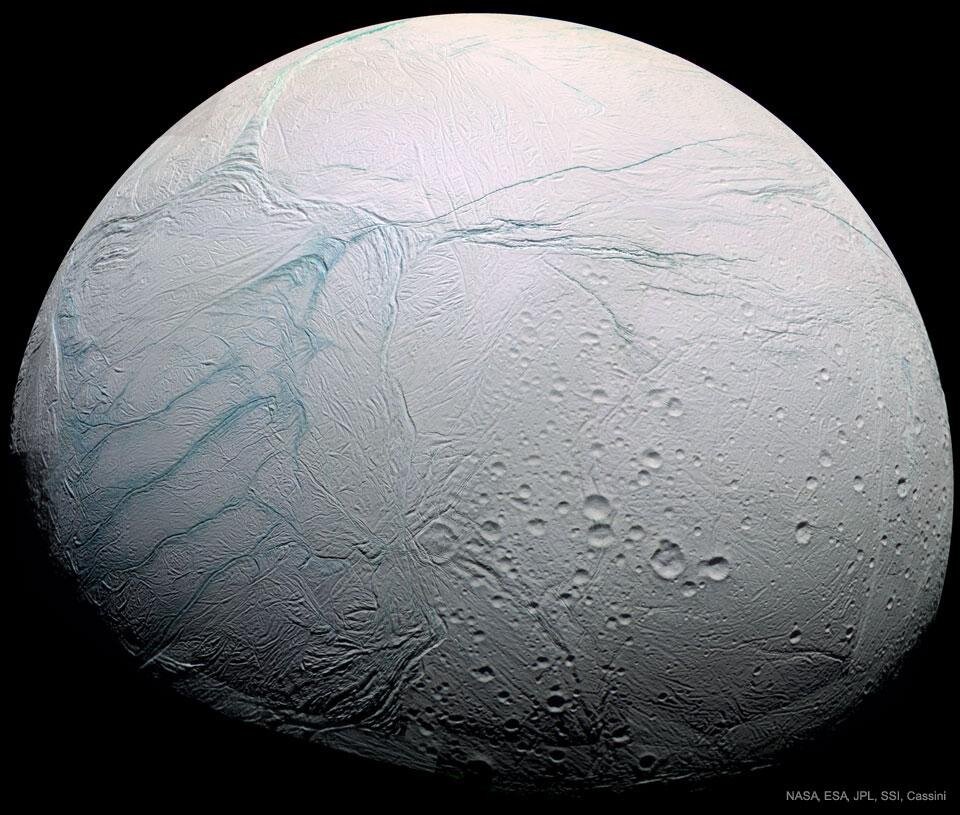
In other news of computer modeling for planetary science answers, a new study was released in Geophysical Research Letters detailing a possible answer for how Saturn’s ocean moon, Enceladus, may have gotten its tiger stripes and how the geysers erupting from those stripes work. The team used a physics-based model to map out the various conditions responsible for the eruptions, and what they found were cycles of warming and cooling that thin and thicken the moon’s ice shell.
During a cooling period, as the ice shell thickens, it presses down on the subsurface ocean, creating pressure within the waters. That same pressure causes stress in the ice itself, which can lead to cracks and fissures. Those cracks and fissures then become 20-30 kilometer pathways for the icy water to follow to the surface.
However, while these models support the hypothesis that the pressure is high enough to make the tiger stripes, it doesn’t seem to be enough to actually cause the waters to geyser out. That process may occur because, as the water hits the cracks, it gets exposed to the vacuum of space since Enceladus doesn’t have an atmosphere. And then it spontaneously boils and erupts through the cracks.
And if you’re wondering about Jupiter’s ocean moon, Europa, it’s possible that there are similar eruptions happening there, but we won’t know that for certain until NASA’s Europa Clipper arrives in the system. The spacecraft is being assembled and is scheduled for launch in October 2024. We’ll bring you coverage of that launch when it happens.
Speaking of assembling spacecraft, Boeing is making progress on Artemis 2. Erik?
On the heels of Artemis 1 rolling out of the VAB last week, NASA announced yesterday that Boeing, who makes the SLS rocket, had completed the forward join on the core stage for Artemis 2. The forward join saw the forward assembly, which consisted of the already joined forward skirt, liquid oxygen tank, and interstage bolted onto the large liquid hydrogen tank with 360 bolts. All that remains is the fifth major piece, the Engine Section. Artemis 2 will carry a human crew to lunar orbit in an Orion spacecraft no earlier than mid-2024.
We have more about a Boeing product in this week’s rocket history segment.
This Week in Rocket History

This week in rocket history, we look back at STS-45, the flight of the first Belgian in space.
Atlantis took off on its eleventh mission from LC-39A in Florida on March 24, 1992, and headed into a 57-degree orbit. This was among the highest inclination missions launched on a shuttle. Even higher inclinations would have required flying over land and recovering the boosters in Lake Erie. Dropping rocket stages on populated areas is not a great idea so that never happened.
The launch was originally scheduled for the previous day but was delayed because of a possible leak in the orbiter’s main propulsion system. At launch, it weighed just over two thousand metric tons, including the solid rocket boosters, external tank, and fuel.
The seven-member international crew included Belgian astrophysicist Dirk Frimout and dual British/American astronaut Michael Foale, in addition to Americans Brian Duffy, Kathryn Sullivan, Byron Lichtenberg, and David Leestma. Also aboard was future NASA administrator Charles Bolden Jr.
The main objective of STS-45 was the operation of the ATLAS-1 experiment in the shuttle’s payload bay. The 5.8-metric-ton ATLAS or Atmospheric Laboratory for Applications and Science used the Spacelab pallet system without the Spacelab module itself. To take advantage of their limited time in space, the crew worked the ATLAS experiments 24 hours a day in two shifts, Red and Blue.
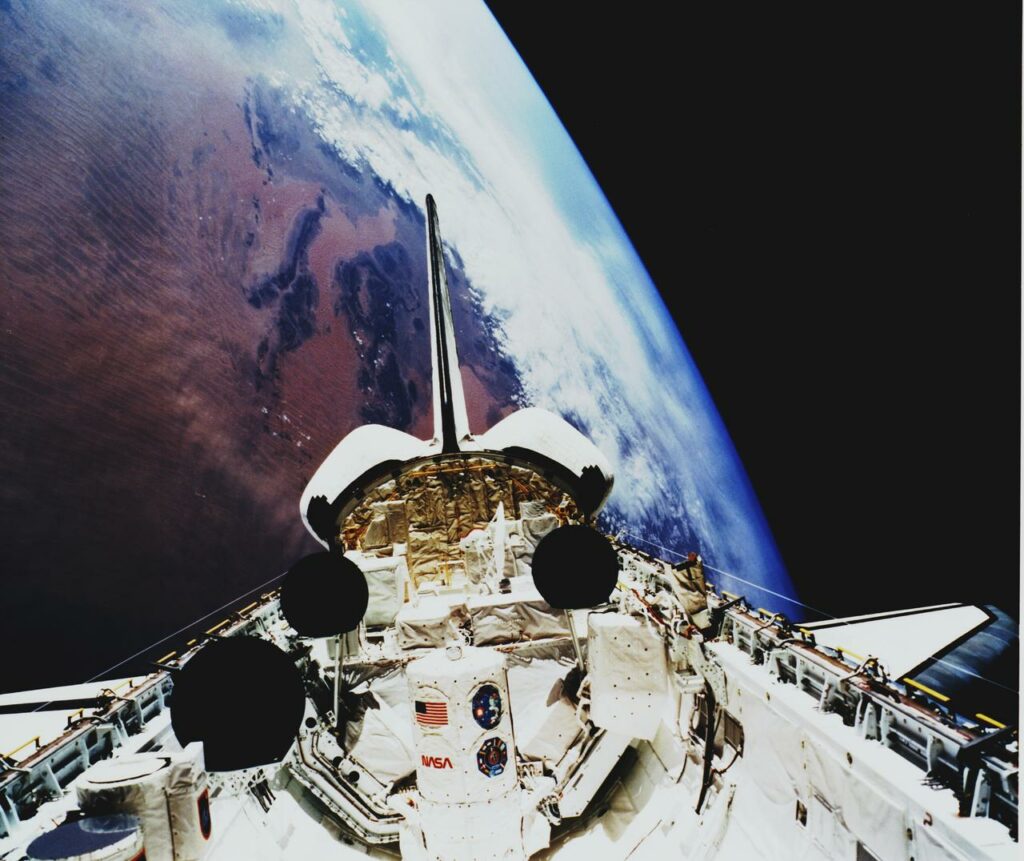
The experiments covered the following areas: atmospheric science, solar science, plasma physics, and astrophysics. ATLAS included twelve instruments aimed at both the Earth and out towards space. Atlantis was maneuvered 250 times to point these instruments where they needed to be to collect their data. Similar to the Orbiting Solar Observatory I told you about a couple of weeks ago, it was planned to be a series of ten missions that would span an entire solar cycle. However, ATLAS ended up flying only two more times, in 1993 and 94.
A repeated shuttle “experiment” was the Shuttle Amateur Radio Experiment, with which experienced radio operators could talk to the astronauts in space during the mission. It consisted of a special low-power radio kit, batteries, and an antenna that was sized to fit on the shuttle’s window. The astronauts spoke with several schools during the mission. It had flown four times previously, and on this mission, it was used by the four crew members who were amateur radio operators. Between themselves, the operators spoke several languages and hoped to talk to people around the world. Because of the orbital inclination of the mission, it was even possible for the crew of STS-45 to contact the crew of the Mir space station using amateur radio.
Another experiment was five pounds of clouds. No, not fluffy white ones, but the Cloud Logic to Optimize use of Defense System experiment. CLOUDS was essentially a Nikon F3 camera and lens and a roll of film. The goal was for the astronauts to take pictures of certain cloud formations from space to improve meteorological models for the military.
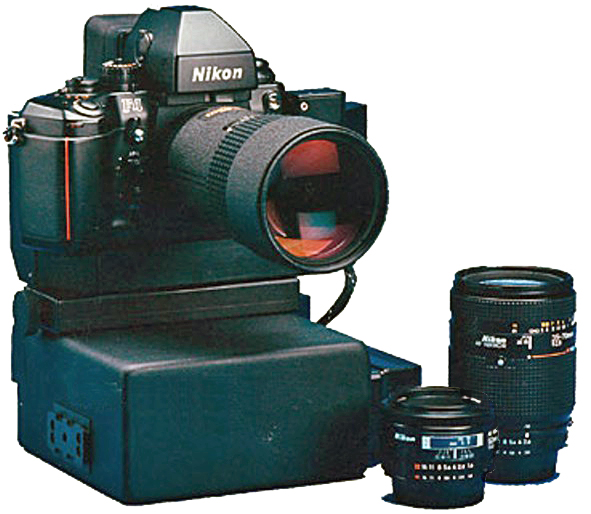
There was another experiment on STS-45 that involved a camera. The Nikon NASA F4 was an early digital camera made by NASA using the body of a Nikon F4 film camera with a digital sensor and electronics underneath the camera to record and store the digital images. The digital back had a monochrome sensor made by a team at the Johnson Space Center that was fifteen by fifteen millimeters in size, or about the size of a modern APS-C sensor. It had approximately a one-megapixel resolution. The square sensor was used because of the ease of post-processing its images. It could only shoot at one ISO speed, 200.
Besides the space experiments, the crew also conducted biological experiments on themselves in the shuttle’s crew compartment, including one experiment on the effects of weightlessness on body tissue and another on how weightlessness affected vision. One Get Away Special, cheap entirely self-contained experiments, flew on STS-45. It studied crystal growth in microgravity from a mount in the payload bay.
The mission was extended by a day in order to continue science experiments. Atlantis landed back at the Kennedy Space Center the morning of April 2nd, 1992, eight days and 22 hours after launch. At landing, it weighed a little over 93 metric tons, having shed most of its initial two thousand metric tons getting to space. It traveled 5.1 million kilometers across 160 orbits.
Statistics
And now, for some statistics.
The number of toilets in space is nine, four on the ISS, one on each of the Soyuzes, one on the Crew Dragon, one on Shenzhou 13, and one on Tianhe.

We keep track of orbital launches by launch site, also called spaceport. Here’s that breakdown:
USA 18
China 5
Kazakhstan 3
Russia 2
India 1
Iran 1
New Zealand 1
From those 31 launches, a total of 584 spacecraft were put into orbit.
Your random space fact for this week is that the north pole star for Mars is Deneb, with the actual north pole of Mars pointing somewhat in the direction of Sadr from Deneb.
This has been the Daily Space.
You can find more information on all our stories, including images, at DailySpace.org. As always, we’re here thanks to the donations of people like you. If you like our content, please consider joining our Patreon at Patreon.com/CosmoQuestX.
Credits
Written by Pamela Gay, Beth Johnson, Erik Madaus, and Gordon Dewis
Hosted by Pamela Gay, Beth Johnson, and Erik Madaus
Audio and Video Editing by Ally Pelphrey
Content Editing by Beth Johnson
Intro and Outro music by Kevin MacLeod, https://incompetech.com/music/


 We record most shows live, on Twitch. Follow us today to get alerts when we go live.
We record most shows live, on Twitch. Follow us today to get alerts when we go live.